Info : Spin As devastating as it was when news came down last Monday that David Bowie had died of cancer at age 69 — and it’s hard to remember many musical deaths so universally or personally affecting — the one saving grace was watching how fans across the world were able to take the opportunity to share and discuss their favorite moments from the Starman’s career. Even more than most other rock legends of his stature, Bowie’s greatness can’t be captured just through remembrances of his finest albums and songs — it’s about the music videos, the live performances, the interviews, the movie and TV roles, the interactions with pop culture and his future disciples, and the tiny, unforgettable musical bits that make his best songs and albums so iconic.
To try to capture the span of one of the greatest artists in rock’s half-century-long history — and to be able to relive all of our personally preferred Bowie bits one more time — we’ve come up with a list of our own 100 favorite moments from the life and times of the Man Who Fell to Earth. And if we’ve left off your own favorite moment, of course we did: Apologies, but if you think even 100 such moments can encompass All Things Bowie, you haven’t been paying enough attention these last eight days. (Or the 50 years before that.)
100. Reciting the Lord’s Prayer at Freddie Mercury Tribute Concert (1992)
Emotions ran high at the 1992 tribute to then-recently departed Queen singer Freddie Mercury, but David Bowie cut to the quick, dropping to his knees at the conclusion of his “Heroes” to recite the Lord’s Prayer for all who have died or suffered from AIDS. Such a simple, unexpected gesture — it took Queen by surprise, Brian May claiming the singer “didn’t do that during rehearsals” — stemmed equally from Bowie’s penchant for theatricality and the deep reservoirs of real emotion that flow through his art. — STEPHEN THOMAS ERLEWINE
99. Voice cameo as Lord Royal Highness inSpongeBob’s Atlantis SquarePantis (2007)
Never underestimate a daughter’s influence on her father, as Bowie’s daughter Lexi’s love of the titular pineapple sea-dweller led Bowie to play Lord Royal Highness in SpongeBob’s Atlantis SquarePantis. Bowie completely transformed his voice for the part — if you didn’t know it was him voicing the aristocrat, it’d be hard to guess; just another new form for one of the most versatile shape-shifters of all-time. — MOLLY EICHEL
98. The croaking sounds in “Wishful Beginnings” (1995)
Trent Reznor cited Bowie’s Low as the primary inspiration for Nine Inch Nails’The Downward Spiral, and he seemed to repay the influence on much of the Starman’s mid-’90s work. “Wishful Beginnings” off of Outside bears the stamp of Reznor’s buried-secret manner of layered production, its recurring croaking noises unnerving like the last gasps from a strangulation lost somewhere in the recording of “Reptile” or “A Warm Place.” — ANDREW UNTERBERGER
97. Villian turn in Into the Night (1985)
John Landis’ mess of a movie is overstuffed with cameos — not just with familiar faces but with directors and screenwriters, the kind of Hollywood players no audience member would recognize — but Bowie’s grinning, mustached turn as a hit man is the film’s highlight, capturing how his charm could slowly turn menacing. — S.T.E.
96. “Don’t be afraid of the man in the moon” from “Love You Till Tuesday” (1967)
From his 1967 self-titled debut, five years before that “Starman” fell to earth, Bowie had his eyes trained on the night sky. “Don’t be afraid of the man in the moon,” he assures on the retrospectively twee infatuation tune “Love You TillTuesday,” “because it’s only me.” — SASHA GEFFEN
95. Declaring himself the Bowie karaoke champ on Facebook (2015)
Don’t read the comments, and if you must read them, certainly don’t engage — a cardinal rule of the Internet, but then, Bowie never was one for obeying rules. When some jabroni on his official Facebook page had the gall to claim that he was the best at calling “ground control to Major Tom,” the Thin White Duke expertly, dispassionately put him in his place. — JAMES GREBEY
94. Whistling in “Never Let Me Down” (1987)
The “Golden Years” outro is the lips-together-and-blow moment of Bowie’s most likely remember, but don’t forget about the ending to this underrated late-’80s hit, Bowie whistling serenely over a harmonica-laced fog that may have accidentally invented the War on Drugs’ Lost in the Dream. — A.U.
93. Synth Swells on “Heathen (The Rays)” (2002)
An underrated musician, Bowie could coax pathos out of synthesizers. On the closer and title track of his 2002 album, these keyboards summon a worry and tumult belied by his vocal. — ALFRED SOTO
92. Demo cover of Bruce Springsteen’s “It’s So Hard to Be a Saint in the City” (1975)
Springsteen’s original version of “Saint” is ebullient and youthful, more posturing. But Bowie wraps his voice around the opening lines — “I had skin like leather and the diamond-hard look of a cobra / I was born blue and weathered but I burst just like a supernova” — as if he’s actually lived what a young Springsteen was just guessing. — M.E.
91. Intro to “Andy Warhol” (1971)
It feels like we’re listening to a moment we’re not supposed to be hearing. It’s not just Bowie’s laughably needling, pedantic correction of how to pronounce Warhol’s name, but when he figures out tape is rolling and lets out a high-pitched bwa-ha-ha laugh that immediately kicks in to the opening guitar riff that’s so truly wonderful. — M.E.
90. Jay Z borrowing “Fame” for “Takeover” (2001)
The number of greats involved in “Takeover” is insane: (1) Jay Z’s history-making diss track for (2) Nas and (3) Mobb Deep was produced by (4) Kanye West and samples (5) the Doors while delivering the killer blow via interpolations of (6) David Bowie’s more-sarcastic-than-ever bellows of“Faaaaaaaame” flipped into “Laaaaaaaame” (as in, Nas’ supposedly now-defunct career). And that’s not even including James Brown. — DAN WEISS
89. Backing vocals for Iggy Pop’s “The Passenger” (1977)
If we’re being really honest, we can count on one hand the number of solo songs that Bowie’s made with the sheer potential to loop in your head more than the “la-la-la-la-lalalalas” from Iggy Pop’s endless 1977 hook. — D.W.
88. Predicting the power of the Internet, pre-millennium (1999)
87. “Arnold Layne” at the Royal Albert Hall with David Gilmour (2006)
In his second-to-last public performance, David Bowie appeared unannounced at David Gilmour’s May 29, 2006 concert at Royal Albert Hall. He sang “Comfortably Numb,” but the moment that inspires chills is a rendition of the early Pink Floyd classic “Arnold Layne,” a performance that serves as a reminder just how much strangeness Bowie copped from Syd Barrett. — S.T.E.
86. Piano freakout in “Aladdin Sane” (1973)
Bowie issued “Aladdin Sane” as something of an anthem for the unhinged, and nothing in the song cements its status quite like the breakdown where the piano goes off the rails. You can almost see him grinning as the chaos hinted at by the song’s first half finally comes to fruition. — S.G.
85. “Golden Years” in A Knight’s Tale (2001)
In middle school we watched A Knight’s Tale for Heath Ledger, only to be introduced to one of Bowie’s best during a choice anachronistic dance scene. Now that placement makes him seem more like a time traveler than ever, launching “Golden Years” back a thousand years in the past so the middle ages can get it on. — S.G.
84. “Everyone Says Hi” in Amplitude (2003)
David Bowie’s songs were a regular and always-welcome fixture in rhythm video games like the Guitar Hero and Rock Band series, but his most memorable appearance in the genre came with the earlier, electronic-focused titleAmplitude. The game turned a dance remix of his elegiac Heathen closer into a breathing organism which players could travel through and change the fundamental DNA of, and Bowie — who always treated music as something profoundly mutable — undoubtedly would’ve loved playing it. — A.U.
83. “Oooh Ooh Ooh Oooh”s in “The Stars (Are Out Tonight)” (2013)
Bowie’s last great pop vocal hook, a double-tracked non-verbal sashay that conveyed the gleaming hollowness of Hollywood allure better than any raving about “Brigitte, Jack, and Kate and Brad” ever could. — A.U.
82. Gunned down by Trent Reznor in “I’m Afraid of Americans” video (1997)
It’s easy to feel paranoid while walking alone in New York City, but if you’re David Bowie being dogged by a greasy-haired Trent Reznor, well, you’d probably jump into the nearest cab, too. But because it’s Bowie’s world and we’re just living in it, the Taxi Driver-inspired clip takes a bizarre turn, with Reznor whisking his terrified passenger along for a joyride and firing shots at his own car with Bowie inside, a feverish kill-yr-idols delusion. Good thing it’s all in his imagination, right? — RACHEL BRODSKY
81. Riding around Los Angeles in Cracked Actor (1975)
Later on, Bowie would remember his ’74-’75 period as a lost period of soulless decadence — which is to say, he didn’t remember it at all — but from this scene in the ’74-filmed BBC documentary Cracked Actor, he seems perfectly excited to be a “foreign body” touring Los Angeles, the proverbial fly in the milk of America’s glamor capital. Plus, with that sharp chapeau towering over his ghostly frame, he brilliantly forecasted “Snakeskin”-era Bradford Cox. — A.U.
80. Opens for himself with 45-minute drum-and-bass set at secret Dublin show (1997)
In 1997, during his peak industrial moment, Bowie surprised just 300 people in Dublin with an intimate club gig following the release of Earthling. He also opened for himself, spinning drum ’n’ bass for 45 minutes for a brief stint as the coolest DJ on earth. — S.G.
79. Backing vocals for TV on the Radio’s “Province” (2006)
When the Goblin King claims your child, he assumes it’s his; the same goes for the musician who plays him. After presuming that Bowie’s phone call toexpress his admiration was their friend playing a joke, Brooklyn indie icons TV on the Radio let their biggest celebrity fan choose Return to Cookie Mountain’s “Province” to call his own — and that he does, curdling its already haunting chorus with his ragged, resonant growl. — H.B.
78. Dream Bowie from Flight of the Conchords(2007)
There’s something eerily prophetic about how Jemaine-as-Bowie’s ascension through the decades in Brett’s dreams — first as a ’70s pant-suited sex god, then his “Ashes to Ashes” character, and then a Labyrinthian velveteer — both mirrors Bowie’s own aging and gives the impression that, somehow, he had already transcended physicality at that point. And yet, even though he’s 20 minutes late to a “party in space” (heaven?), he’s as clumsy and hilarious as the rest of the Flight of the Conchords universe. — H.B.
77. Hanging out with the Sigma Kids in Philadelphia (1975)
When Bowie was in Philadelphia recording Young Americans, a group of kidsstarted following him from the Barclay Hotel on Rittenhouse Square to Sigma Sound Studios on North 12th Street. On the final day of recording, Bowie invited the kids into the studio to listen to the final cut of the album; a not-uncharacteristic act of gregariousness. If you’re ever in Philly, go to Doobie’s on 22nd and Lombard and ask for Patti, she’ll tell you all about it. — M.E.
76. Playing the rube in Jazzin’ for Blue Jean(1984)
David Bowie’s charisma shone so brightly he commanded attention without any effort — which is why his labored turn as a straight man in the long-form “Jazzin’ For Blue Jean” video is such an awkward delight. Mugging for the camera and stammering like David Niven, Bowie does not take well to playing a rube — not for nothing is he overshadowed by his glam alter-ego Lord Byron (also played by Bowie) during Byron’s performance of the single — but watching him struggle is the fun of this. — S.T.E.
75. Faux-turn in The Venture Bros. (2006)
Perhaps the greatest moment of genius on Adult Swim’s The Venture Bros. was revealing that David Bowie was the (literally) shapeshifting leader of the villainous Guild of Calamitous Intent. Even though Bowie didn’t actually voice this major character, and later seasons would reveal that the chameleonic figure wasn’t the real David Bowie, his turn at the helm of a classier Legion of Doom checked out: As co-creator Doc Hammer said, “it made sense because, I mean, doesn’t everybody at least once in their lives pretend to be David Bowie?” — J.G.
74. “Where the f**k did Monday go?” from “Girl Loves Me” (2016)
A refrain that, on January 8, rung out as water-cooler talk for all us wage slaves, a slightly unhinged hook teetering between the profane and mundane; but since January 10, it’s gotten tougher to simply smirk when confronted with this question, harder to block out the panic and fear behind it. The lack of an answer is the answer itself. Where the f**k did Monday go? Doesn’t matter, it’s just gone. — KYLE MCGOVERN
73. Cameo in Twin Peaks: Fire Walk With Me(1992)
Bowie’s links to the Lynchverse are many, having played the lead in the Broadway version of The Elephant Man and soundtracked the closing scene of the director’s Lost Highway. But only for one scene did the two Davids truly interact as actor and director, when Bowie showed up in the Twin Peaks film sequel Fire Walk With Me as the mysteriously disappeared agent Phillip Jefferies. He wears an inappropriate suit, he speaks gibberish in an indiscernible accent, he screams, he’s a natural. — A.U.
72. Harmonica solo in “Unwashed and Slightly Dazed” (1969)
Despite dedicating a song to him on Hunky Dory, Bowie didn’t spend much of his career as a Dylan acolyte, but at the very least, he picked up an affection for the harmonica from ol’ Zimmy. The instrument makes a number of memorable appearances throughout the Bowie catalog, nowhere moreso than on Space Oddity’s underrated “Unwashed and Slightly Dazed,” where a swampy Bo Diddley stomp provides the perfect backdrop for a couple minutes of serious blowing from Benny Marshall — former singer of the Rats, the breakout band for one Mick Ronson. — A.U.
71. “Bowie Secrets” on Conan (2002)
With complete deadpan seriousness, Bowie told the audience of Late Night with Conan O’Brien some of deepest, darkest secrets, like his love of touching all of the straws at the McDonald’s. He doesn’t crack once, keeping his cool while he admits to his real identity as a Korean woman. But man, don’t you want to see the outtakes? — M.E.
70. “This seeeeerious moonlight” from “Let’s Dance” (1983)
On a pop-funk single with enough mainstream appeal to top the charts on both sides of the Atlantic, Bowie was still able to imbue a sinister bent through his growling, near-threatening delivery of this fundamentally strange phrase. Idiosyncratic wording as it may have been, “serious moonlight” became iconic enough not only to title the accompanying Let’s Dance tour, but also a Meg Ryan comedy flop from a quarter-century later. — A.U.
69. Cameo as Pontius Pilate in The Last Temptation of Christ (1988)
Shot and held for a few seconds in long shot so that his celebrity doesn’t distract, Bowie’s cameo in Martin Scorsese’s adaptation of the Nicolas Kazen novel that upset sane people in 1988 is a small masterpiece of superciliousness. In Pilate’s eyes Jesus Christ is another Jewish troublemaker, a bore, a would-be magician. He has no time for him. — A.S.
68. “I’m trying hard to fit in your scheme of things” from “Word on a Wing” (1976)
Station to Station ranks tonally among Bowie’s most arch and artificial rock records, but he lands an astonishing moment of vulnerability in its center. “I’m trying hard to fit among your scheme of things,” he sings, powerless, to a potential or imaginary lover, his voice reaching a strained peak he wouldn’t match again until the climax of “Heroes.” — S.G.
67. The bridge to “This Is Not America” (1985)
Streamlined in the fashion of Let’s Dance, “This Is Not America” — theme song to the 1985 Sean Penn/Timothy Hutton Cold War thriller The Falcon And The Snowman — plays its ominousness as elegance, but achieves a state of grace when Bowie glides into a soaring “time” on the bridge. — S.T.E.
66. Bowie on Bugs Bunny (1986)
As part of a special celebrating the 50th anniversary of Looney Tunes in 1986, a number of real-world celebrities were “interviewed” about classic characters from the series — including David Bowie, who reluctantly answered questions about Bugs Bunny while fleeing to his hotel room. The chuckle-worthy clip paints Bugs as a figure of much deep-seated resentment for Bowie, but as something of a wascawwy wabbit within the pop world himself, it certainly makes sense that the Thin White Duke would see the legendary Leporidae as a worthy adversary. — A.U.
65. Solo break to “Up the Hill Backwards” (1980)
That Bo Diddley beat again, through which Robert Fripp’s guitar hacks like a scimitar and castanets add accents. — A.S.
64. “I think we’re in for a big surprise right between the eyes” from “Bombers” (1971)
A song this good should never have been a rarity. Look how Bowie uses from the refrain “I think we’re in for a big surprise right between the eyes”: At first it’s forceful and near-shouted, but repeated for the final time, the line leads brilliantly into the song’s melancholy ending. — M.E.
63. Cinematography in the “Absolute Beginners” Video (1986)
A big hit in Britain but essentially nonexistent on the U.S. charts, “Absolute Beginners” is accompanied by a gorgeous Julian Temple video that bests his 1986 feature of the same name by trading in a luxurious black-and-white. Bowie is right at home in these noir environs, racing through the shadowy streets like the classic movie star he always wanted to be. — S.T.E.
62. Astronaut Chris Hadfield does “Space Oddity” in outer space (2013)
We always knew that Bowie was too big for Earth, but Canadian astronaut Chris Hadfield took him up into the cosmos for real. Hadfield’s wistful, longing expressions as the globe spins beneath him give both humor and pathos to his “Space Oddity” rendition. Lookin’ forward to when NASA gets its act together and we can hear “Life on Mars?” from our brand-new Red Planet base. — J.G.
61. Screeching hook to “Little Wonder” (1997)
The NIN’n’Squarepusher-styled Earthling is predictably a mess, but it’s more fun than U2’s contemporaneous Pop, and as a bonus, Bowie produced his bats**t techno excursion all himself, rather than hiring hipper know-it-alls. And anyway, who was hipper than Bowie? Prodigy? Nah. Six-minute opener “Little Wonder” is unpleasantly schizoid as a whole, but the good half hinges on a Skrillex-dolphin cyber-guitar squeal that Reznor himself would kill for. — D.W.
60. The “READ” Poster (1987)
Sting took his poster for the American Library Association’s READ campaign very seriously indeed — naturally, he was pictured by a castle — but Bowie decided to have some fun, dressing up for the teenage wildlife this targeted. Dressed in a varsity jacket and wearing no shoes, he seems like a parody of a middle-American student, and the fact that he’s reading Dostoyevsky’s The Idiot is a nice nod to the Iggy album he produced, too. — S.T.E.
59. Bowie and Iman playing Neo and Trinity onRosie O’Donnell (1997)
Bowie and Iman aren’t credited with costume design on The Matrix, which would come out two years after this appearance on The Rosie O’Donnell Show, but we’d bet good money these outfits flashed across the Wachowskis’ TV while they were dreaming up their cyberpunk smash. — S.G.
58. Tin Machine covering “Debaser” (1991)
It took the Pixies — the loudest, artiest, and poppiest of all the American underground bands of the late ’80s — to shake David Bowie out of his overly produced doldrums and rediscover the visceral power of guitars. Tin Machine’s records were patchy, but when they covered “Debaser” in concert, it became clear the debt Bowie owed to Black Francis. — S.T.E.
57. Mick Ronson’s junk-riffing in “Jean Genie” coda (1973)
Mick Ronson, suspicious of excess, liked to scuzz up a singer’s melodies. The Bo Diddley-Doors pastiche called “The Jean Genie” repeats its hook ad infinitum while Ronson extemporizes, piling on junk riff after junk riff. — A.S.
56. Seu Jorge’s “Life on Mars” in The Life Aquatic (2004)
Brazilian singer-songwriter Seu Jorge had so many Bowie covers featured inThe Life Aquatic, not all of them could fit on the soundtrack, but “Life on Mars?” is arguably the most powerful. Jorge mines the song’s melancholy, and where Bowie went bombastic in the chorus, Jorge modulates his voice only slight to convey the vast emotion of the Hunky Dory classic. — M.E.
55. Opening credits to The Hunger (1983)
Bowie’s not actually seen that much in the iconic opening credits to Tony Scott’s vampire cult favorite — there are only flashes of his face as Bauhaus’ “Bela Lugosi’s Dead” blasts through the scene. Nonetheless, it’s so clearly him: His costar, Catherine Deneuve, is one of the great beauties of cinema, but these split seconds prove that Bowie’s visage is just as iconic. — M.E.
54. Walking the runway at the end of the “Boys Keep Swinging” video (1979)
Bowie’s sardonic play on “the idea of the colonization of gender” made for one of his best music videos, featuring the singer crooning the song’s preposterous preachings of entitlement (“When you’re a boy / You can buy a home of your own / Learn to drive and everything”) as an exaggerated ’50s teen idol. And in case the joke wasn’t clear to anyone, Bowie also shows up as his own backup singers in drag, each getting their turn to work it out on the runway, in front of no one in particular. — A.U.
53. Happy 50th birthday from Scott Walker (1997)
In 1997, Bowie’s 50th birthday was celebrated at a Madison Square Garden concert that featured Lou Reed, Frank Black, Foo Fighters, and many other high-profile well-wishers. But the must touching tribute the Earthling received at his half-century mark came from early idol Scott Walker, who left a voice message with the BBC praising him for his “generosity of spirit when it comes to other artists,” leaving Bowie speechless. (Well, almost: “That’s amazing… oh, I see God in the window.”) — A.U.
52. Accurately predicting the changing music-industry model (2002)
“I don’t even know why I would want to be on a label in a few years, because I don’t think it’s going to work by labels and by distribution systems in the same way… The absolute transformation of everything that we ever thought about music will take place within ten years, and nothing is going to be able to stop it.” Bowie couldn’t have predicted his own death in 2002 (or could he?), but his takedown of record labels, distribution means, and copyright laws could not have been more accurate. Certainly more forward-thinking than those holdouts from streaming services, anyway. — H.B.
51. Puff Daddy’s “Been Around the World” swiping the beat to “Let’s Dance” (1997)
No one internalized the pop music of early MTV as diligently (or as it would turn out, profitably) as Sean Combs, who quickly established the habit of spinning new wave-era hits by artists like Matthew Wilder and the Police into secondhand gold. Bowie got his turn when “Been Around the World” took the immortal “Let’s Dance” groove out for another tango, and Puffy learned about more than disco-funk from his benefactor: “That grip isn’t from training, Puff,” he apparently told the rap mogul after shaking his hand for the first time. “That’s from 40 years of trying to hold on to your money in the music business.” — A.U.
50. Spider species named after Bowie (2008)
Bowie always dabbled in multiple fields at once — fashion, music, theater, art — but in 2008, he finally made the leap to entomology. A Malaysian species of spider was given his name by German arachnologist Peter Jäger, who noticed the two specimens’ shared affinity for colorful makeup and fantastic hair. —S.G.
49. “You’re such a wonderful person / But you got problems” from “Breaking Glass” (1977)
Over one of Bowie’s nastiest riffs ever, an unleashed bass vamp and appropriately bonkers electronic interruptions, he delivers the perfect kiss-off… to his drug-addled self. (I mean, he was drawing Crowley-inspired symbols on the carpet at the time.) This couplet beat Green Day’s self-checking “Sometimes I give myself the creeps” by a couple of decades and change, and Bowie was far less emo about it. — D.W.
48. ★ giving Bowie his first U.S. No. 1 album (2016)
Despite his enduring cultural salience, Bowie never hit the top of the Billboard200 during his lifetime. Leave it to him to land that spot from the other side as one of his final stunts. — S.G.
47. The descending piano on “Sense of Doubt” (1977)
Just a four-note pattern that sounds like half of a rudimentary scale exercise, but the piano “hook” to this “Heroes” instrumental lands with such pounding menace that it sounds like Bowie and Eno auditioning a motif to be the villain’s theme in a fairy tale. (And maybe they were — Bowie would narrate a Philadelphia Orchestra recording of Peter and the Wolf just a couple of months later.) It’s a creeping dread that you need the hot-spring koto pops of “Moss Garden” to properly cleanse yourself of. — A.U.
46. Bowie Bonds (1997)
As a people, rock stars are not known for their financial acumen, but teaming with banker David Pullman in the late ’90s, Bowie and his manager sold asset-backed securities in order to make money from his back catalog. His methods proved innovative enough within the music industry that James Brown, Holland-Dozier-Holland, and more followed suit. — M.E.
45. “I don’t think you knew that you were in this song” from “Five Years” (1972)
The opener to Ziggy Stardust unspools line after line of devastation as its characters react to the impending death of the planet — and then Bowie goes ahead and smashes the fourth wall. “I don’t think you knew you were in this song,” he sings to an oblivious love interest, breaking the frame, brightening the scenery, and turning the song from a defeat into a triumph. — S.G.
44. Bowie discovers emus (1983)
While shooting videos for Let’s Dance in the land down under, Bowie met an emu for the first time. “What a ridiculous bird!” he exclaimed in sheer delight to Rolling Stone reporter Kurt Loder. He had to travel all the way to Australia, but he finally found his kin. — A.U.
43. “Wake Up” with Arcade Fire at VH1’s Fashion Rocks (2005)
Even with the rapturous critical acclaim and increasing mainstream buzz surrounding the Arcade Fire in early 2005, it still felt like they entered another strata of the rock universe when they got the David Bowie tap on their collective shoulder. In September of that year, Bowie made his endorsement official by joining them for a skyscraping performance of “Wake Up” on VH1, his invigoration obvious as he belted through the first verse. The band would be topping the charts and winning Grammys in no time. — A.U.
42. Supports the longhair cause as a 17-year-old (1965)
Are stars born or made? This mid-’60s interview with a pro-hippie-hair teenage Bowie supports both sides: He may have been genetically blessed with rock star-worthy locks, but he chose to grow them to his shoulders, and then to advocate for the right to let his freak flag (or nine-inch blond bob) fly. In either case, no one’s getting stuffed in Davey Jones’ locker after that clip. — H.B.
41. Kissed by fans in “DJ” video (1979)
Partway through the “DJ” video, Bowie leaves the booth to walk the streets of London, where he is unsurprisingly mobbed by fans wanting to get a piece of their idol — including a couple that practically bite his face off showing their affection. One of the fans making out with him is a guy; the first male-on-male kiss ever shown on MTV. That’s Bowie for you: so inspirational that his fans end up doing the trailblazing for him. — A.U.
40. Covering Simon & Garfunkel’s “America” at the Concert for NYC (2001)
In the wake of 9/11, Bowie managed to achieve the perfect elegiac note by reshaping Paul Simon’s “America.” Accompanying himself on a cheap Casio keyboard, his spare arrangement let Simon’s travelogue breathe while also striking a fittingly discordant note. — S.T.E.
39. Aladdin Sane Cover (1973)
For all Bowie’s metamorphoses, that red-and-blue lightning bolt slashed across his face was the image to embed him into our visual lexicon. Nothing says “Bowie” more vividly or immediately; nothing marked him more as an icon. — S.G.
38. “Where Are We Now?” closing refrain (2013)
The Next Day came packed with potential singles, but Bowie picked the slow and sentimental “Where Are We Now?” to kick off the album’s campaign. What seems at first like a languid ballad builds to an urgent grip on life itself and the love we’re able to fill it with: as long as there’s sun, as long as there’s rain, as long as there’s me, as long as there’s you. — S.G.
37. “Fashion” at the London Olympics (2012)
When it came to represent British fashion to the world at the London Olympic games, David Bowie’s 1980 hit of the same name was canonized as the definitive soundtrack to the subject — never mind that the ode was a satirical one that may have really been about fascism. Nonetheless, models from now until the 2112 games will never not be invincible strutting to that grinding guitar stomp — A.U.
36. Performance in “Be My Wife” video (1977)
The key moment is after the first chorus and second “Sometimes I get so lonely”: Bowie gives his Stratocaster (played by Ricky Gardener on Low) an oh-well-I-guess-I-should-play-this glare of dead-eyed boredom. He squelches the song’s anguish by forcing viewers to concentrate on his wedge hair (in 1977!), the long fingernails, the rubbery vampiric lips. — A.S.
35. “Changes” quoted at the beginning of The Breakfast Club (1985)
Even if you never contextualized it in Bowie’s 1971 Hunky Dory single, odds are that The Breakfast Club’s opening line has been branded in your brain every bit as much as “Could you describe the ruckus, sir?” It was written for the outcasts — just about all of youth — and thanks to the movie’s indefatigable staying power with teenagers, it’s guaranteed to touch successive generations who couldn’t care less about classic-rock radio. — R.B.
34. “Golden Years” on Soul Train (1976)
With a face almost imperceptibly more angular from his hefty cocaine intake, Bowie’s “Golden Years” strut was much stiffer than (if just as inebriated as) his touchdown on the vast, illuminated Soul Train stage the year prior with an incandescent rendition of “Fame.” But he does eventually limber up — lip curling slightly, pompadoured hair falling onto forehead, long white limbs briefly pinwheeling — and the gawky interviewee of just a few moments ago shifts into The Man Who Fell to Earth. — H.B.
33. “Little Fat Man” song on Extras (2006)
Celebrities of all manner got to show a comedic side on Ricky Gervais’ Officefollowup, but few got to humiliate Gervais’ character so musically. Bowie is inspired to create a song about a “chubby, little loser” — no, wait “pathetic, little, fat man” — after Andy Millman decides to unload his problems on Bowie. Good thing the VIP section they’re sitting in has a piano so everyone can join in the on the “pug-nosed face” refrain. — M.E.
32. Bowie, Iggy, and Lou (1972)
31. “Cat People (Putting Out Fire)” inInglourious Basterds (2009)
David Bowie always blurred boundaries between decades and aesthetics, so his music is a natural fit for Quentin Tarantino, particularly for his rule-bending, history-distorting WWII revenge flick Inglourious Basterds. When our hero Shosanna musters up the strength to incinerate a theater full of Nazis, it’s set to Bowie’s Let’s Dance live wire “Cat People (Putting Out Fire),” and the song’s new-wave spin on disco ratchets up the tension to the breaking point. — S.T.E.
30. The trumpet enters in “Jump They Say” (1993)
A modest hit at the time, “Jump They Say” appeared in the thick of grunge in 1993, but its pleasures were much more sophisticated than thudding guitars and screamed choruses. The track simmers for two minutes before Lester Bowie (no relation) leaps in with his trumpet, his bold, almost atonal solo accentuating and extending the unease that lies at the heart of the song. —S.T.E.
29. Rhyming “Juvenile delinquent wrecks” with “T. Rex” in “All the Young Dudes” (1972)
Bowie might’ve given away one of his glam-rock masterpieces in preeminent power ballad “All the Young Dudes,” but the song still smacks so much of Ziggy Stardust that today it may be better associated with him than performers Mott the Hoople anyway. His finest moment penning this one comes with the first verse’s closing couplet, two lines that set the terms of generational warfare while shouting out one of the generals on the front lines, and a forced rhyme that was well worth the squeeze. — A.U.
28. “Bowie” and “Iggy” kiss in Velvet Goldmine(1998)
Todd Haynes’ unauthorized filmic fan fiction Velvet Goldmine dug into many truths about Bowie, and it also entertained a lot of pure fantasy. The most knowingly outrageous comes when Bowie’s stand-in Brian Slade and Lou Reed/Iggy Pop hybrid Curt Wild kiss in the middle of a golden circus ring for a crowd of reporters. It’s a moment that only occurred in the minds of young fans figuring out their queerness through Bowie’s outward flirtations, but that doesn’t mean it didn’t happen. — S.G.
27. Mugshot after getting busted for pot possession (1976)
Pot possession must’ve been a frustratingly banal thing for the Thin White Duke to get busted for, but at least he made up for it with his singular mugshot — a photo so striking, composed, and improbably elegant that you can only picture his glamor team mingling with the arresting officers a couple feet to the left. — A.U.
26. Judging the Zoolander walk-off (2001)
Bowie mocked the fashion world decades before Ben Stiller and Owen Wilson, but he was still game to swoop back for another round. His deadpan performance in Zoolander’s infamous “Walk Off” scene sells its implausible silliness — even the nut-crunching gag. — S.G.
25. Dancing in the “Dancing in the Streets” video (1985)
A sweetly cheesy yet wholly sincere ’80s snapshot. The Stones frontman and Bowie are like a rhythmic yin and yang: Jagger’s face flaps and his limbs flail, but a rail-thin Bowie is more controlled in his freeform neck jerks, pocket dances, high kicks, and hip swagger. Always the performance artist, that one — even when Cleopatra-dancing with Jagger in abandoned warehouses. — R.B.
24. “Lift off” countdown in “Space Oddity” (1969)
Imbuing a sense of verisimilitude into this astronomic hit originally recorded in 1969 (coincidentally the year man officially touched down on the moon), Bowie speak-whispers a liftoff countdown while Ground Control gives him the all-clear; then guitarist Mick Wayne hits the thrusters, and there’s no turning back. It’s one of the first and best examples of the multi-pronged way he’d engage with art — the entire “Space Oddity” introduction references 2001: A Space Odyssey and Richard Strauss’ tone poem “Also sprach Zarathustra” — and most important, Bowie’s longstanding love affair with the stars. — R.B.
23. “Starman” on Top of the Pops (1972)
There may be no moment more iconic in David Bowie’s history than his ’72 appearance on Top of the Pops, singing the career-making “Starman.” Already an alien vision in his red hair and blue guitar, Bowie achieves a louche transcendence when he drapes an arm around Mick Ronson, pulling him in for a chorus and sending shock waves through Britain. — S.T.E.
22. Exploding kitchen in “Ashes to Ashes” video (1980)
Of all the disquieting, washed-out images that make up the iconic “Ashes” video — Bowie leading a funereal procession in front of a bulldozer, flailing in a pond while wearing Pierrot getup, cowering in the corner of a padded cell — none endures quite like the bizarre exploding kitchen sequence, three seconds of Major Tom stuck in a catastrophe of domesticity. It made quite the impression on another new-wave artist tying the knot, as Billy Idol stole the set piece for his massive “White Wedding” video, making appliance-combusting one of the oddest clichés of early MTV. — A.U.
21. “Wham bam, thank ya ma’am” from “Suffragette City” (1972)
“Suffragette City” chugs on from its opening riff, a burst of energy after the slower-paced Ziggy Stardust. But it’s the bridge that makes the song so special, building and building over pounding piano and and buzzing synths, until that tension is finally broken, as Bowie’s voice breaks through a build up of “awwwws” and explodes into the unforgettable shout-along: “WHAM BAM, THAN YA MA’AM!” It’s almost relief, and the only way the song could possibly wind down — mostly meaningless, but a gut-punch nonetheless. — M.E.
20. Intro to Iggy Pop’s “Nightclubbing” (1977)
Always underrated as a producer, Bowie got to flex a little on the two 1977 albums where he manned the decks for proto-punk legend and fellow advanced life-form Iggy Pop. But perhaps the finest moment on either record came against his better impulses: The narcotically throbbing, air-raid drum machine intro to “Nightclubbing” was only meant as a placeholder until Bowie could replace it with a live drummer. (“He said, ‘I can’t put out a record with that,’” Pop recently recalled. “I said, ‘But I can.’ And he smiled, and he realized this was a playground for him.”) The alien and strangely seductive opening thankfully remained; a generation later, it would inspire the most famous introin the history of industrial rock. — A.U.
19. Performing mock-fellatio on Mick Ronson onstage (1972)
Bowie was all about sex: He exuded it, he defied it, he refused to conform to its norms, he was unapologetic about it. One of the more indelible images in a career full of indelible images is Bowie fellating Mick Ronson’s guitar: In concert, Bowie, in full Ziggy Stardust regalia, would get on all fours and slink toward his axeman. Bowie would latch onto Ronson and open his mouth, as the soloist continued to wail. It was taboo, for sure, but it was also electric, as if the sounds that were coming out of Ronson’s instrument were emanating from the raw power of pure sexuality. Which, in a way, they were. — M.E.
18. Introduction scene as Nikola Tesla in The Prestige (2006)
Materializing out of thin air and walking through bolts of electricity, Bowie’s Nikola Tesla gives us the most entrancing debut of any Christopher Nolan character this side of Heath Ledger’s Joker. But considering his natural magnetism and preferred conversation topics — changing the world, obsession, how nothing is impossible — this part could’ve been credited to “David Bowie as Himself” and no one would’ve batted an eye. — K.M.
17. The “Heroes” cover (1977)
A reference to 19th-century German expressionism and/or a coded message to his home planet, the “Heroes” album cover pose is Bowie’s most striking visual and most immediately identifiable silhouette. As if parody images from Cexand even Dr. Who weren’t enough to keep the image a perennial, it’s also the only Bowie album cover to merit its own sequel, in 2013’s censor-boxed The Next Day art. — A.U.
16. “I know when to go out / And when to stay in” intro to “Modern Love” (1983)
Bowie wasted no time announcing his Reagan-era persona: He kicks off “Modern Love” — the swinging opening cut on 1983’s Let’s Dance — with slashes of guitar, thundering drums and the softly delivered announcement that “I know when to go out / And when to stay in / Get things done.” No longer the wandering explorer, he was now a model of efficiency, delivering concentrated thrills with a wink and a grin. — S.T.E.
15. The “As the World Falls Down” sequence from Labyrinth (1985)
“As the World Falls Down” is known as the dreamy ballroom dance at the climax of Jim Henson’s Labyrinth. While the song isn’t as catchy as “Magic Dance,” the scene itself shows exactly what kind of performer Bowie was: There’s a crowded room full of people in masquerade costume, but Bowie’s goblin king Jareth is the only figure you want to look at. He disappears and reappears, seducing through his mere presence and nothing more. Jennifer Connelly’s Sarah is enthralled, and so are we. — M.E.
14. “It’s not the side effects of the cocaine / I’m thinking that it must be love” from “Station to Station” (1976)
“It’s not the side effects of the cocaine / I’m thinking that it must be love,” goes the full line from the third section of the Thin White Duke’s epic ten-minute debut; possibly Bowie’s greatest album-opener. And indeed, he’s hardly the only thin white thing in the song, which builds to a heart-pounding disco climax that mimics the intense effects of the powder in question. But even in 1976 the only thing Bowie had more of than cocaine was love. — D.W.
13. Nirvana covering “The Man Who Sold the World” (1994)
Though not technically “unplugged,” Nirvana’s rendition of “The Man Who Sold the World” was unveiled during their now-worshipped MTV Unpluggedperformance in 1993. And it’s safe to say that, at least for kids who grew up with late-period Bowie, this version stands (slouched) as the definitive interpretation. But it’s a testament to Bowie’s sound and vision that “Sold,” the title track from his third album, could resonate so vividly so long after its original 1970 release. Amidst the stargazer lilies and candles onstage, filled out with cello, and sung by Kurt Cobain, this dreamlike tale of searching for, and encountering, another version of oneself carries a mournful air that the Starman himself only glanced at. — K.M.
12. Climax to “Under Pressure” (1981)
“Love dares you to change our way of caring about ourselves,” Bowie cries in the climax of his Queen duet “Under Pressure,” the ultimate example of his ability to collaborate with artists on his level of otherworldliness. What begins as a fist-shake to ’80s Thatcherism morphs into a universal call for morality and humanism. It isn’t too late to follow in his stead. — R.B.
11. Mick Ronson’s solo to fade on “Moonage Daydream” (1972)
“Freak out / Far out,” David Bowie commands at the end of the early Ziggy Stardust climax “Moonage Daydream,” and his sideman is more than happy to oblige. The closing “Daydream” showcase may be Ronson’s definitive moment as a Martian Spider, eschewing flashy fretwork in favor of coaxing interplanetary transmissions out of his six-string, swirling wails that seem to scale higher and higher even when the notes themselves are unchanging. David Gilmour, who’d mark his own definitive solo over a similar outro chugseven years later, was undoubtedly listening in. — A.U.
10. Klaus Nomi and Joey Arias-assisted SNLperformance (1979)
In 1979, Bowie was in transition — his Berlin era was ending, and he was about to enter a pop-friendlier phase of his career with the next year’s Scary Monsters (And Super Creeps). But Bowie always had a toe in the avant garde. And when he returned to New York for an appearance on Saturday Night Live, he brought along cabaret performer Klaus Nomi and performance-artist Joey Arias to sing back up. The Duke was clad in an oversized tux for “The Man Who Sold the World” and a skirt and heels for “TVC15,” while Nomi and Arias sang back-up and dragged around a pink stuffed poodle behind him. For “Boys Keep Swinging,” he cloaked his body in life-sized marionette, including an erect penis that seemingly slipped by censors. SNL is a place where the live element is supposed to add a spark of excitement, but bands usually just end up playing through their songs. Bowie made sure to perform. — M.E.
9. Presenting the Grammy for Best R&B Performance (1975)
On the cusp of leveling up from cult favorite to outright superstar with 1975’sYoung Americans album, Bowie was given his widest Stateside exposure to that point with a presenting appearance at that year’s Grammys. He did not waste the opportunity to make an impression: The plastic soul man showed up rail thin, visibly intoxicated and highly bemused, delivering his intro with the urgency of creeping molasses: “My personal award… is having the opportunity… to salute… ces premières femmes… noire.” Then came the giant cardboard heads, and Bowie’s unsurprisingly unchill reaction. The Starman later said that he didn’t remember any of 1975, including these awards — “I mean, I knew I’d worn an evening suit somewhere, but I didn’t know it was there,” he claimed — but it’s unlikely anyone from the heartland watching the alien for the first time would forget him anytime soon. — A.U.
8. The opening riff to “Rebel Rebel” (1974)
The best classic-rock riff since the Rolling Stones’ “(I Can’t Get No) Satisfaction,” and the one that best internalizes that song’s primary lesson: Get the hook right the first time, and there’s no reason to ever change it. Piercing through the closing muck of “Sweet Thing (Reprise)” at the end of Diamond Dogs’ A-side like the first ray of sunshine in a cloudy and mundane existence, the “Rebel” riff is freedom rock at its purest, a combination of electric-guitar keystrokes that unlocks an entire universe of possibility. Hey babe, let’s go out tonight. Sure, where to? — A.U.
7. Criticizing MTV for not playing enough black artists (1983)
An early adopter of the music video — pioneering the form well before there was a network to air it around the clock — David Bowie knew perfectly well the power and potential of MTV, and when it was going to waste. Crucially, he also possessed the courage to confront the network on air, slyly and firmly interrogating VJ Mark Goodman about MTV’s reluctance to play clips by black artists. At the time of this ’83 interview, the network relied almost entirely on videos by white acts, relegating black musicians to insomniac hours. Goodman claimed middle America might be “scared to death of Prince” and the channel needed to play music “the entire country would like,” providing Bowie an opening to retort, “I’ll tell you what the Isley Brothers or Marvin Gaye means to a a black 17-year-old, and surely he’s part of America as well.” As clear a statement of Bowie’s inclusiveness as can be found — and, coincidentally or not, the network put Michael Jackson’s “Billie Jean” in heavy rotation a few months after. — S.T.E.
6. Revealing his true alien self in The Man Who Fell to Earth (1976)
Bowie made his acting debut in Nicolas Roeg’s wildly scattered The Man Who Fell to Earth, a film that holds up more for its imagery than anything else. But his bizarre and vulnerable performance as wayward alien Thomas Newton would cement him as a giant of raw, untrained acting talent. The film’s most powerful sequence arrives when Newton finally reveals his alien identity to his human lover, Mary Lou; he takes off his wig and contacts and exposes his smooth, sexless body. She’s horrified at first, then sympathetic, then curious. She asks him what his alien children are like. “They’re like children,” he insists in what might be the most tender line reading of his whole career. “Exactly like children.” That moment transforms Newton from a manipulative outsider into a lost and helpless refugee, and the rest of the film only tortures that new-minted sympathy. — S.G.
5. “Ziggy played guitar” from “Ziggy Stardust” (1972)
Five syllables, three words, moaned by Bowie — except not entirely Bowie. At the height of his ’70s Ziggy Stardust persona, the man formerly known as David Jones feared that he could not separate himself from the space-cowboy rock star he’d dreamed up. And so, he imagined a scenario in which Stardust became so enamored of himself that his band, the Spiders From Mars, planned revenge on their egotistical leader. Yet no matter how inseparable Bowie (another character, really) became from that slinky, hot-haired extraterrestrial, Bowie’s revolutionary, gender-fluid, deliciously strange Stardust eternally lives on with a nasal, everlasting closing wail of “Ziggy plaaaaaaaaaayed… guitaahhhhhh.” — R.B.
4. “Peace on Earth/Little Drummer Boy” with Bing Crosby from Bing Crosby’s Merrie Olde Christmas (1977)
So many of the tributes to David Bowie in the days following his death were about how he could revel in the weird and the different. But in 1977, Bowie participated in the painfully normal: taking a break from his Berlin period to appear on Bing Crosby’s Merrie Olde Christmas TV special. In a staid blue suit, Bowie — the most daring and outré performer of his generation — sits next to the most traditional performer of his. Reportedly, Bowie sang “Peace on Earth” and “Little Drummer Boy” with Crosby only because he knew his mother loved the singer. But it was really a boon for Bowie in a different way: If there was ever a question that Bowie’s appeal was entirely flash and costume, this performance removed any such doubt. Bowie and Bing sound lovely together, and even if they aren’t the most comfortable pair philosophically, they harmonize beautifully. Here were two fantastic musicians, with different points of view, at different points of their careers, singing a song together. It was as pure and simple as that. — M.E.
3. The “last show we’ll ever do” performance of “Rock ‘N’ Roll Suicide” (1973)
When David Bowie hired director D.A. Pennebaker to film the final show of the Spider From Mars’ 1973 U.K. tour he had a card up his sleeve: He decided to break up the band after their July 3 gig at London’s Hammersmith Odeon. Nobody in the audience was prepared for this farewell — few in the band were, either; only trusted lieutenant Mick Ronson was in on the secret — so when he concluded the concert by announcing, “This particular show will remain with us the longest because not only is it the last show of the tour, it’s the last show we’ll ever do,” he unleashed panic in the crowd, many of whom thought he was announcing his retirement.
Pennebaker keeps his camera close on Bowie throughout the electric subsequent performance of “Rock ‘N’ Roll Suicide,” a move that magnifies the singer’s control of the stage: He seems invigorated by his decision to split the Spiders and the shockwaves that rippled through the audience, a couple of whom rush the stage at the song’s finale. Time proved this was no premature retirement but instead it was something else: the first time David Bowie decided dramatic change was necessary for artistic growth. Decades later, there’s still a visceral thrill in seeing him shed his skin in public. — S.T.E.
2. The final verse of “Heroes” (1977)
Few songs make history, and even fewer ever turn it. It’s still up for debate whether Bowie’s 1987 performance of “Heroes” in West Berlin mobilized the Wall’s eventual fall, but as a relic of the city’s desperation, the gem of his Berlin years has enough power to knock down mountains. “I remember standing by the wall,” he croaks. “And the shame was on the other side.” The couple in this love story don’t find their happy ending, but they do manage to make one moment together last an eternity — shame or no shame, Wall or no Wall. Bowie’s fictions had that power. They still do. — S.G.
1. “Ain’t there one damn song that can make me / Break down and cry?” from “Young Americans” (1975)
Given the emotion of this past week, it’s still tough to discuss a David Bowie lyric about breaking down and crying. Truthfully, though, it’s not like the breakdown to “Young Americans” had any trouble inspiring that heightened of a response even when Bowie was alive and swinging. With its shimmying groove, rapturous backing harmonies, and soul-drenched sax, the former Ziggy Stardust’s first U.S. Top 40 hit is still his most vital musical celebration of being young and in love and in love with being young — even as its lyrics detail increasing disillusionment with romance, politics, and mid-’70s life in general. The dissonance between the song’s melodic ecstasy and its hardened lyrics rises to impossible tension over four minutes of overstuffed vocal ad libs and increasingly frenzied sax work — until it all cuts out for Bowie to offer the rhetorical question in jarringly patient a capella, lapsing into well-earned falsetto. It’s his most stunning musical moment in a catalog full of the unmatchable.
The best songs don’t make us cry because of how sad they are — the best songs make us cry because of how good they are, how much they remind us of how beautiful music and art and life can be. The outpouring of public grieving surrounding David Bowie’s death had much to do with what a singular figure he was in opening the world up to new sounds, new fashions, and new ways of thinking, sure. But the level of feeling was still first and foremost inspired by how many of his songs had become inextricable parts of our lives, had made our world seem like a better (and much bigger) place, and had reminded us of the way music connects us all in a way no other art form truly can. One damn song? Try dozens, spanning each of the last six decades, and none moreso than “Young Americans.” — A.U.

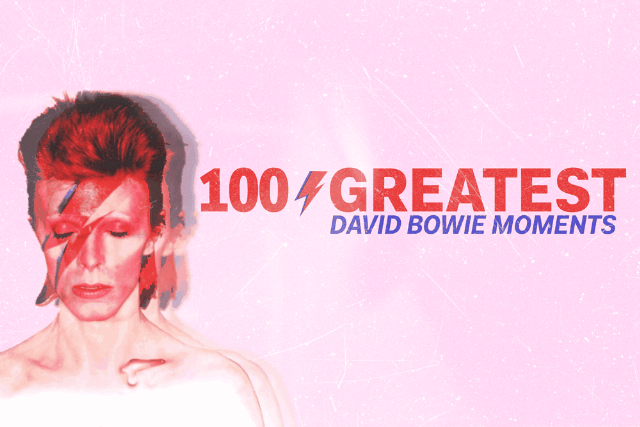

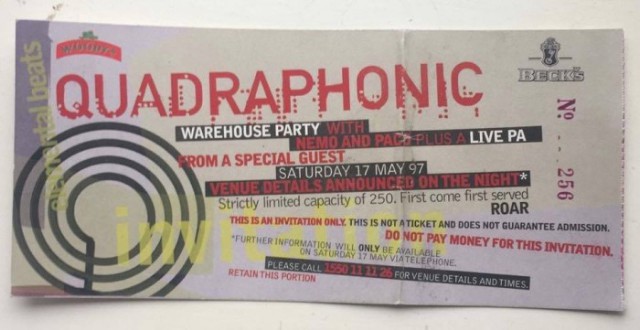

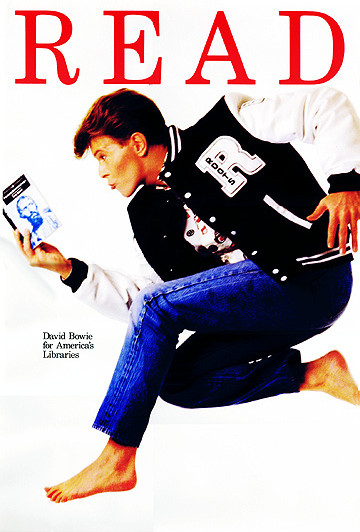


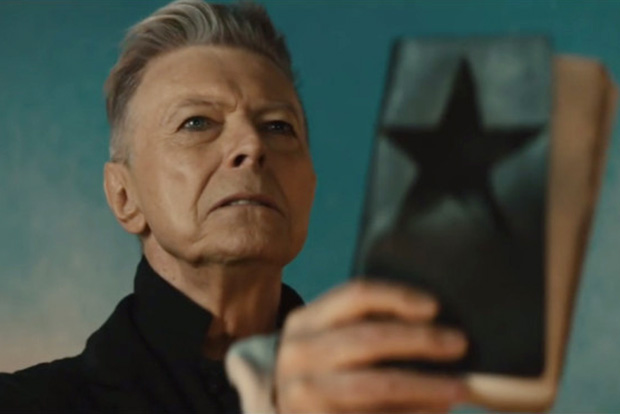
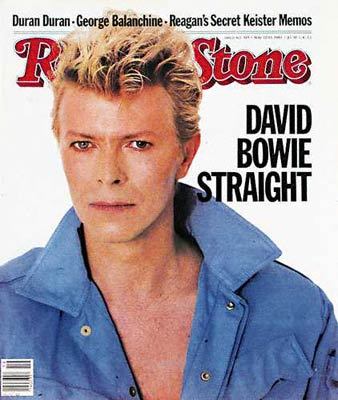
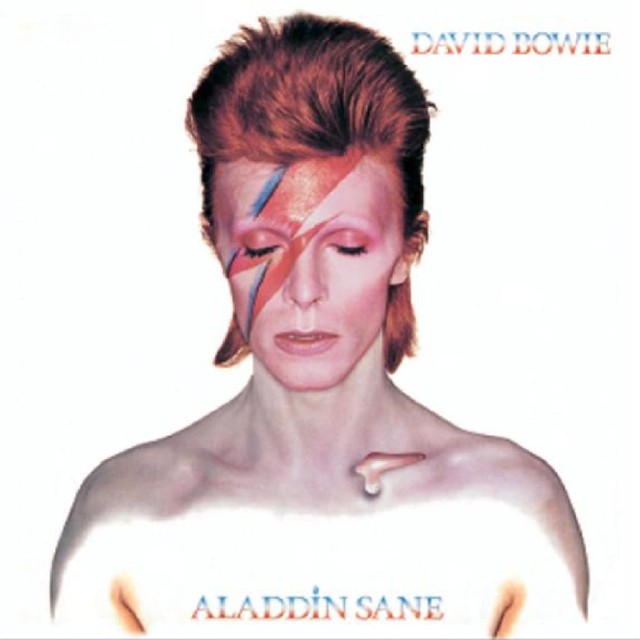
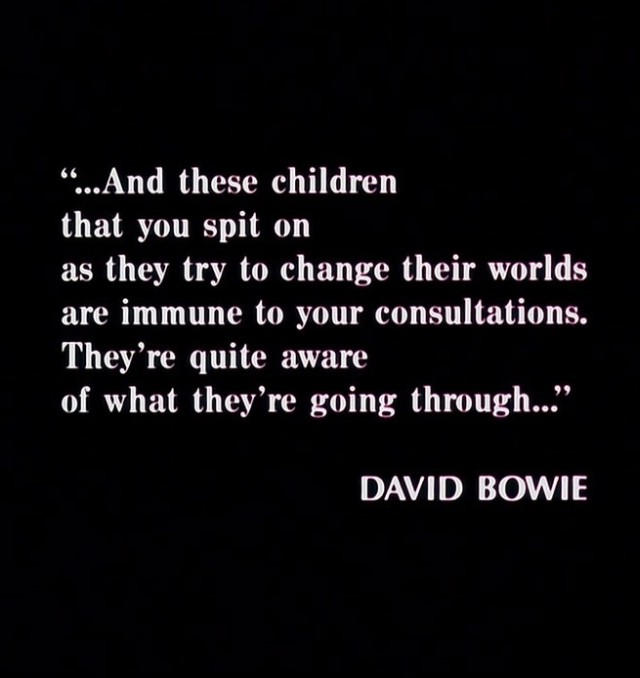
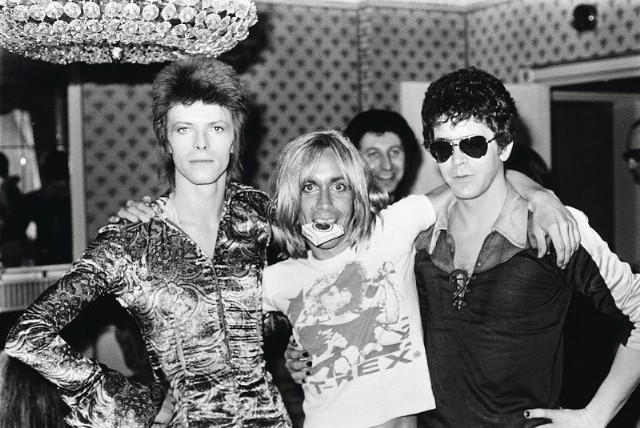
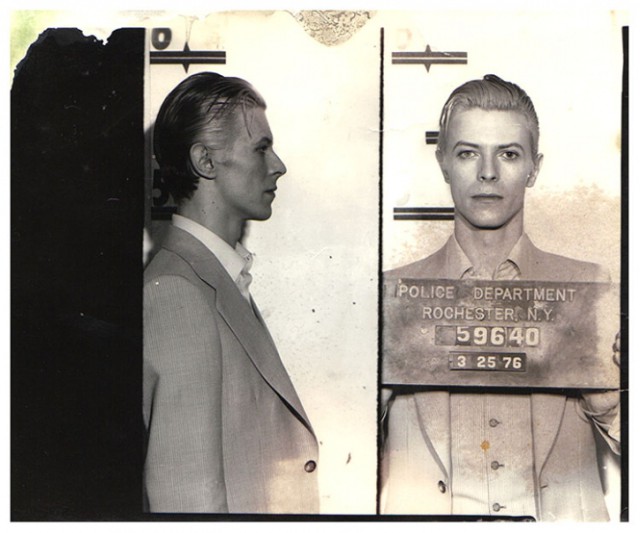
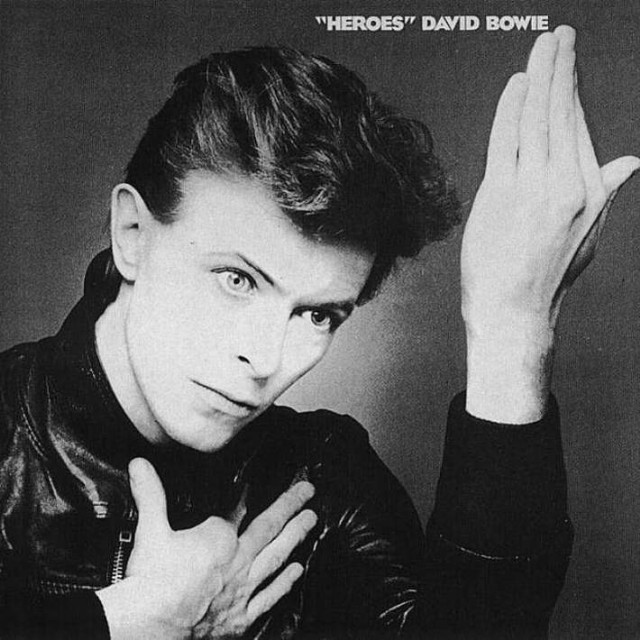
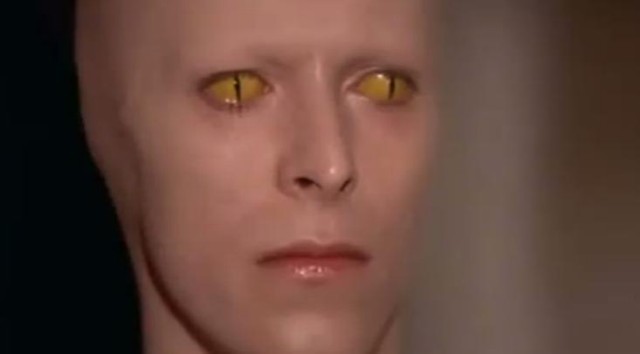
4.5
4.5
5